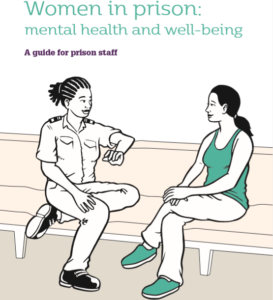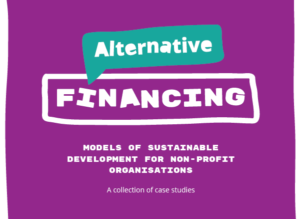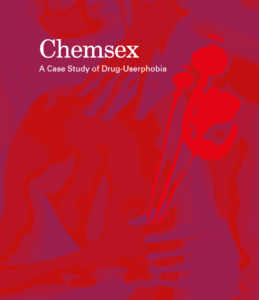Within EU-funded COVID-19 Solidarity Programme for the Eastern Partnership countries AFEW International prepares regular updates on the COVID-19 developments in the region – Armenia, Azerbaijan, Belarus, Georgia, Moldova, and Ukraine. What is the situation today? Please, check it here!
You can find previous updates in the COVID Corner on our website.
As of 21 July 2022:
Regional overview
Confirmed daily COVID-19 cases in 2022, between 1 January 2020 and 20 July 2022 in the 6 countries of the Eastern Partnership

Source: Sciences Po Media lab Coronavirus Country Comparator
Situation report Armenia

Image: Worldometer
Cases of COVID-19
— During the month of June 2022, COVID-19 cases are increasing. In the week 11-17 July alone, 629 new cases have been confirmed, which is 56% higher than 3 weeks earlier.
— There have been 424,400 infections, 8,629 coronavirus-related deaths, and 412,661 recoveries reported in Armenia since the pandemic began.
Measures to contain the epidemic
— As of May 1, 2022, Armenia has waived the requirement of passengers to present a vaccination document or negative PCR test upon entry. Armenia remains open to foreign visitors by air and land.
— The quarantine regime, which replaced the state of emergency in Armenia in September 2020, had expired on June 20, 2022, thereby annulling all remaining quarantine measures.
— The Ministry of Health of Armenia announced than in 2021, 35.2 billion dram have been directed to combat the COVID19 pandemic.
Vaccine
— Armenia has administered at 2,150,112 doses of COVID vaccines so far. Assuming every person needs 2 doses, that’s enough to have vaccinated about 33.3 % of the country’s population.
Situation report Azerbaijan

Image: Worldometer
Cases of COVID-19
— Azerbaijan is reporting a rise in COVID-19 cases with a 277 daily cases on July 19th 2022.
— There have been 795,495 infections, 9,729 coronavirus-related deaths, and 784,356 recoveries reported in Azerbaijan since the pandemic began.
Measures to contain the epidemic
— Corona restrictions have been largely lifted. Public facilities are mostly open. However, restrictions on the use of public services remain in place for the unvaccinated. Foreign certificates are accepted as proof of full vaccination or recovery. It is obligatory to wear a mouth-nose protection in indoor areas and public transportation.
— At present, entry into the country is only possible by plane. However, as of 15 April 2022, the obligation to present a negative PCR test for COVID-19 is abolished for foreigners arriving in the Republic of Azerbaijan, and passengers of domestic flights will not be required to provide the document.
— Among the initiatives by Azerbaijan to respond to the coronavirus crisis, robust strategies were adopted to minimize its impact on society, including social protection of women and children, displaced persons, older population, people with disabilities and migrants.
Vaccine
— Azerbaijan has administered at least 13,793,947 doses of COVID vaccines so far. Assuming every person needs 2 doses, that’s enough to have vaccinated about 48.2% of the country’s population.
Situation report Belarus

Image: Worldometer
— Belarus is expecting a new COVID-19 wave by September 2022 due to a 10,147 spike in cases between May and July 2022.
— There have been 994,037 infections, 7,118 coronavirus-related deaths, and 985,592 recoveries reported in the country since the pandemic began.
Measures to contain the epidemic
— On April 3rd, Belarus has lifted its covid-related borders restrictions, which were in place since October 2020. Now Belarus citizens can now freely cross the border, while foreign travelers can enter Belarus with a PCR test or vaccination proof. Citizens of Russia and Ukraine are exempted from this requirement due to the geopolitical situation.
— Schools and workplaces have no lockdown measures or recommendations. People are no longer encouraged to stay at home or isolate.
Vaccine
— Belarus has administered at least 13,206,203 doses of COVID vaccines so far. Assuming every person needs 2 doses, that’s enough to have vaccinated about 67.2% of the country’s population.
Situation report Georgia

Image: Worldometer
— There have been 1,667,453 infections, 16,847 coronavirus-related deaths, and 1,637,293 recoveries reported in the country since the pandemic began.
Measures to contain the epidemic
— Practically, all the restrictions and regulations have been waived, except for the uniform wearing of masks. Facemasks are mandatory only at healthcare facilities and in public transport. Since May 2, 2022, it is no longer compulsory to wear the facemask at schools or outside.
— A complete report on government measures implemented in Georgia against COVID elaborates on the four stages from preventing to slowing, managing, and adapting to the coronavirus.
— Georgia’s government has published many resources with recommendations and guidelines on personal hygiene, self-isolation, pregnancy and breastfeeding, risk groups, media, catering and traveling. From May 2, the government also publishes weekly reporting of Coronavirus updates every Tuesday.
Vaccine
— Georgia has administered at least 2,910,418 doses of COVID vaccines so far. Assuming every person needs 2 doses, that’s enough to have vaccinated about 34.2% of the country’s population.
— Georgia’s NCDC has received over 330 specialised freezers and 500 cold containers for storing COVID-19 vaccination with support of USAID.
Situation report Republic of Moldova

Image: Worldometer
— Moldova is reporting an increase in COVID-19 cases of 3360 between 11-17 July 2022, almost twice more than the week before.
— There have been 520,321 infections, 11,567 coronavirus-related deaths, and 504,142 recoveries reported in Moldova since the pandemic began.
Measures to contain the epidemic
— Since 16 March 2022, most of the COVID-19 related bans have been removed by Moldovan authorities. All public spaces, including markets, restaurants, bars, theatres, cinemas are operating as usual, without any limit on the numbers of guests. You should still wear a mask in all closed places, such as public transportation and supermarkets. No COVID-19 certificate is required in public spaces. Schooling is in-person.
— Due to rising cases of COVID-19, “code orange” state has been announced in the capital city of Chisinau on 12 July 2022. However, the Minister noted that new COVID-19 measures will not be as severe as those during 2020-2021 due to changing attitudes and rising vaccination rates.
Vaccine
— Moldova has administered at least 2,197,380 doses of COVID vaccines so far. Assuming every person needs 2 doses, that’s enough to have vaccinated about 40.4% of the country’s population.
Situation report Ukraine

Image: Worldometer
COVID-19 cases
— Ukraine is reporting 2 infections per 100K people reported last 7 days, that is less than 1% of the peak — the highest daily average reported on February 10.
— There have been 5,020,181 infections, 108,690 coronavirus-related deaths, and 4,904,953 recoveries reported in the country since the pandemic began.
Measures to contain the epidemic
— Since 26, Ukraine has abandoned its quarantine zone system. During the state of war, employees are not obligated to vaccinate. Healthcare authorities are preparing for a spike in COVID cases, although it is difficult to obtain real-time data.
— On May 27, the country-wide quarantine has been extended until 31 August 2022.
Vaccine
— Ukraine has administered at least 31,668,577 doses of COVID vaccines so far. Assuming every person needs 2 doses, that’s enough to have vaccinated about 36.5% of the country’s population.
— Ukraine’s Ministry of Health encourages its citizens who flee the war to get vaccinated abroad when they have a chance to do so: particularly, in Poland, Romania, Slovakia, Moldova, Hungary, and Czechia.
— To encourage vaccinations in the country, on July 20th 2022, the Ministry of Health of Ukraine has allowed citizens to get a second booster COVID-19 vaccination shot.
Interesting reads



